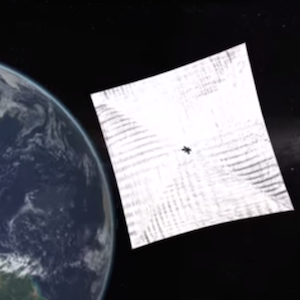LightSail Solar Spacecraft To Launch In 2016
The privately funded Planetary Society’s LightSail 1 experiment will be taking a ride into orbit on the SpaceX Falcon Heavy rocket to attempt a solar sail in April 2016.
LightSail Launching In 2016
“LightSail-1 and its parent satellite, Prox-1, are scheduled to hitch a ride to orbit aboard SpaceX’s new Falcon Heavy rocket,” wrote the Planetary Society’s Jason Davis. “LightSail-1 will be released into space, unfurl its silver sails and attempt to become the first CubeSat to demonstrate controlled solar sailing—flight by light.”
Prox-1, a small satellite, and LightSail-B will be released into space into a circular orbit. Once Prox-1 finishes inspecting the spacecraft, it will release LightSail-B, which will use photons from the sun to propel itself. Both Prox-1 and LightSail-B will capture images of the flight.
"If all goes well,” said investor David Spencer. “Prox-1 will be there to take some pretty stunning images of the solar sail."
Planetary Society’s CEO, Bill Nye the Science Guy, first attempted a solar sail experiement in 2005 with the Cosmos-1 mission. It failed because the rocket flamed out early, sending Cosmos 1 into the Barents Sea. Since the premature end to the experiment almost a decade ago, the Planetary Society went back to raising funds for a new project, which like the first, endeavors to prove there’s a more cost-efficient way to explore outer space.
"You can trade money for time," Nye said during the webcast of the launch-date announcement event. "If you have time, you can send these things, hypothetically, to extraordinary distances in the solar system. And you wouldn't send one — you'd send an armada."
GET THE FREE uINTERVIEW iPHONE APP FOR LATEST NEWS UPDATES
RELATED ARTICLES
Get the most-revealing celebrity conversations with the uInterview podcast!







Leave a comment